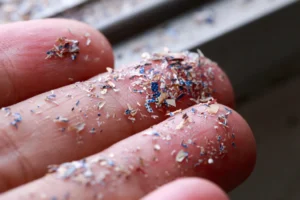HOW DO THE MICROPLASTICS IN OUR BODIES AFFECT OUR HEALTH
A field in a sleepy corner of Hertfordshire, barely an hour’s drive north of London, houses the world’s longest running agricultural experiments. Initiated by Victorian aristocrat and landowner John Bennett Lawes, who later became a successful pioneer of modern fertilisers, the aim was to test out various ideas for boosting wheat production. But without the help of modern technology, the only means of storing data was to meticulously collect samples of dried wheat grain, straw and soil from the field and bottle them away. When it started in 1843, Lawes had little idea that this tradition would endure for another 182 years, creating a remarkable archive of samples. Now housed at the research facility Rothamsted Research, in Harpenden, the collection reflects many of the changes that human activity has inflicted on the planet in the past two centuries.
Andy Macdonald, the current custodian of the archive at Rothamsted Research, affectionately known by colleagues as “Keeper of the Bottles”, says that samples collected during the 1940s and ’50s contain radioactive traces – reflecting the fallout from the era’s nuclear weapons testing. But there’s another unwelcome record which can be found in these bottles of ancient soil – the first emergence of microplastics. According to one famous estimate, we might consume up to 52,000 microplastics per year, and while that precise figure has been subsequently challenged, it’s clear that they are entering the human body in significant quantities. Whether ingested through our food, the liquids we drink, or absorbed from the air we breathe, microplastics have become ubiquitous.





